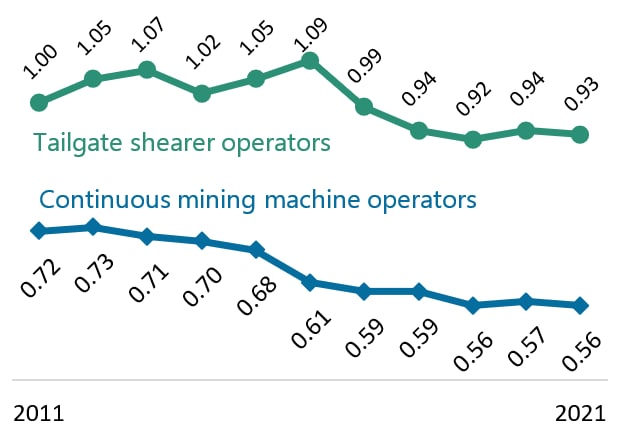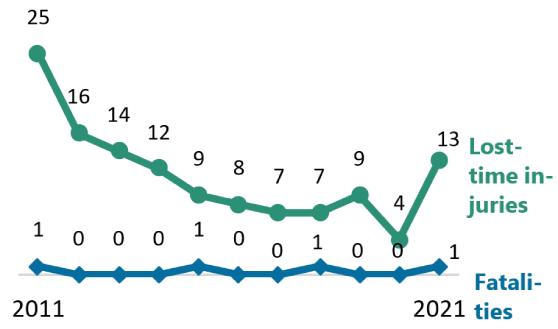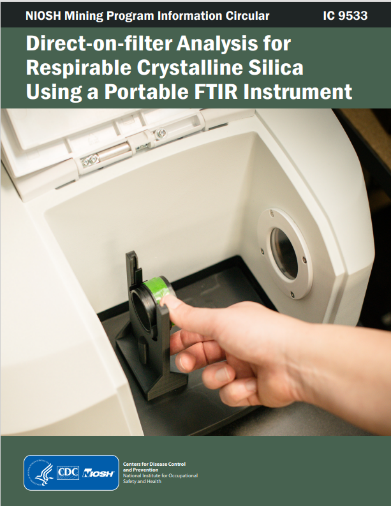Mining Program PPOP
What are our priorities?
The National Institute for Occupational Safety and Health (NIOSH) Mining Program works with partners in industry, labor, trade associations, professional or-ganizations, government, and academia. The program focuses on these areas:
- Reducing exposures to harmful mine dusts, airborne pollutants, heat, noise, and repetitive motion.
- Preventing injuries and fatalities from machinery, rock falls, materials handling, slips, trips, and falls, and other mining workplace hazards.
- Improving the likelihood of rescue and miner survival if disaster strikes.
What do we do?
- Develop and promote health solutions that maximize worker protection, minimize exposures, and prevent disease. These include control technologies, monitoring techniques, and best practices to address aerosol contaminants, heat, and noise.
- Create and share new technologies and recommended practices that will reduce injuries and fatalities involving powered haulage equipment and machinery.
- Design solutions to prevent musculoskeletal disorders and injuries from materials handling and slips, trips, and falls.
- Develop innovative control technologies, practices, and procedures for robust and resilient disaster prevention systems.
- Develop design criteria and engineering solutions for ground support systems that protect underground miners during seismic events or failure of weak rock.
What have we accomplished?
- Published a guide for users of the field-based respirable crystalline silica monitoring approach.
- Published a second edition of a best practices handbook containing more than 80 practical and effective coal mine dust control technologies.
- Reached over 25,000 downloads of the ObsPlus seismic data processing software used by geologists and mine operators to monitor and analyze potentially hazardous geological conditions.
- Published a strategic agenda and held three virtual meetings of the Miner Health Partnership to enhance progress toward the Mining Program’s health goals.
- Released the Ground Support Factor of Safety Calculator, providing western underground metal mine engineers with a tool to improve the safety of their ground support designs.
- Updated the Air Quantity Estimator software, providing operators a starting point for estimating the air quantity needed to dilute diesel particulate matter in an underground large-opening mine.
What’s next?
- Release guidance on how to use an ArcGIS database to prevent coal mine bumps and other potentially disastrous dynamic failures.
- Validate a novel seismic monitoring sensor array.
- Release the Framework for Induced Seismicity software library for automated processing needed to predict potentially disastrous seismic events.
- Develop quality assurance and quality control guidelines for using cemented backfills to prevent mine collapses.
- Evaluate the NIOSH-developed automated cab filtration system, Smart Cab.
- Conduct lab studies to compare elongate mineral particle samplers.
- Provide evidence-based guidelines for safe mining around gas wells.
- Report new findings from mine escape respirator surveillance.
- Investigate next generation mine escape closed-circuit respirator technologies.

Mention of any company or product does not constitute endorsement by the National Institute for Occupational Safety and Health, Centers for Disease Control and Prevention
At-A-Glance
The Mining Program’s mission is to eliminate occupational diseases, injuries, and fatalities among workers in the mining industry. This snapshot shows recent accomplishments and upcoming work.
Average respirable dust exposures for two coal mining jobs, (mg/m3)

Source: MSHA Open Government Dataset
Ground fall fatalities and injuries in underground metal mines

Source: MSHA Accident Injuries dataset
To learn more, visit
www.cdc.gov/niosh/mining/
December 2022

